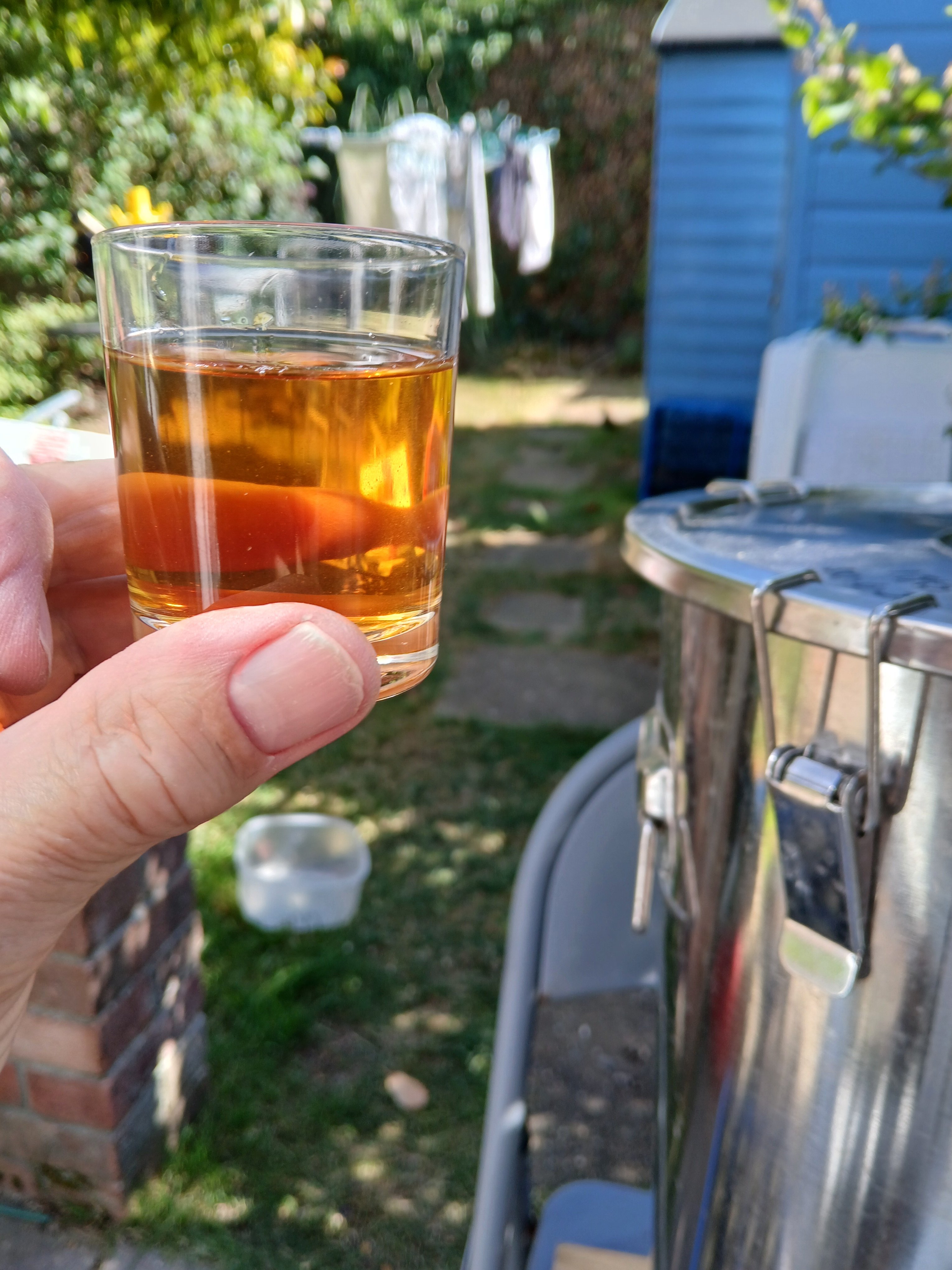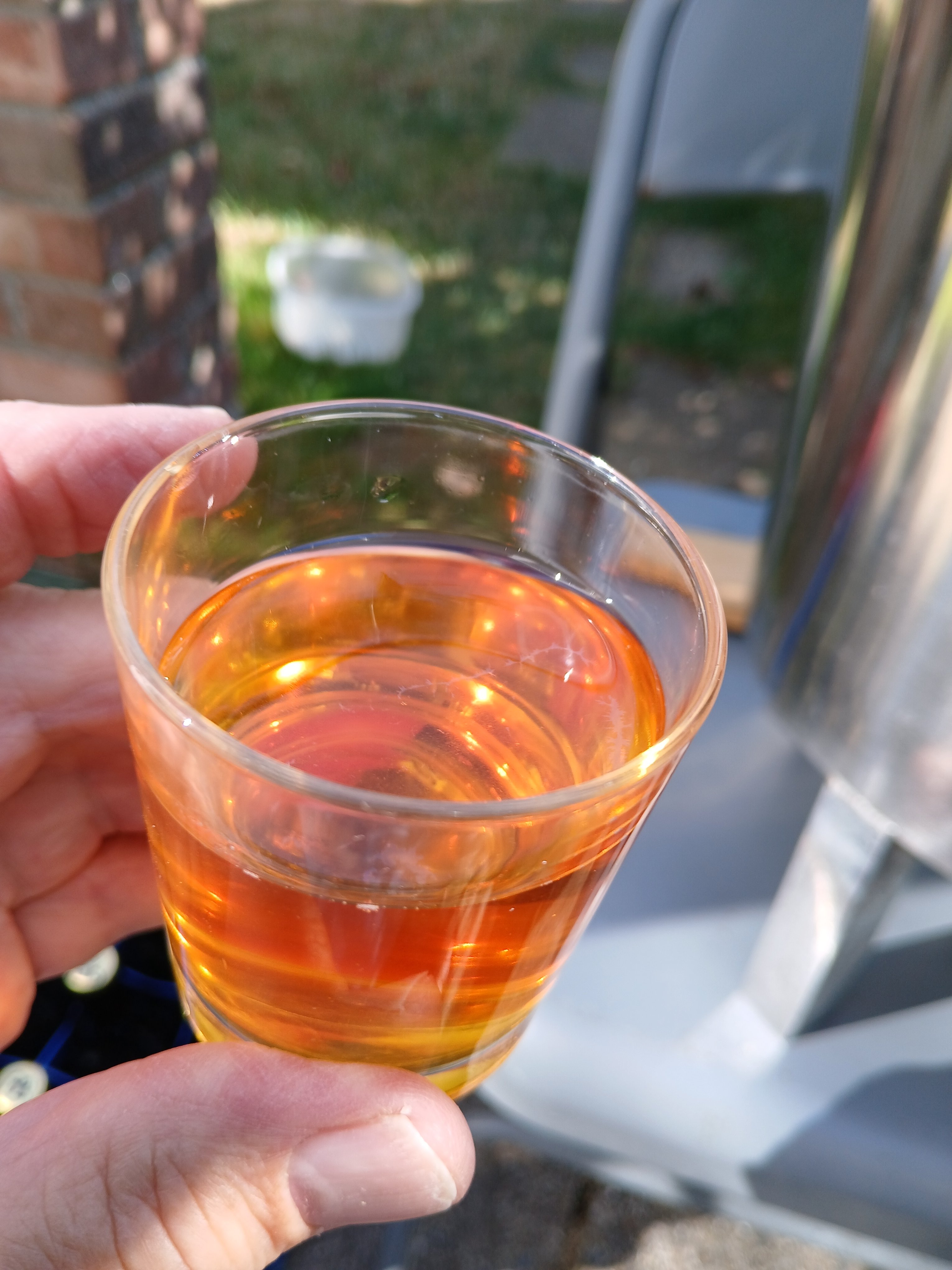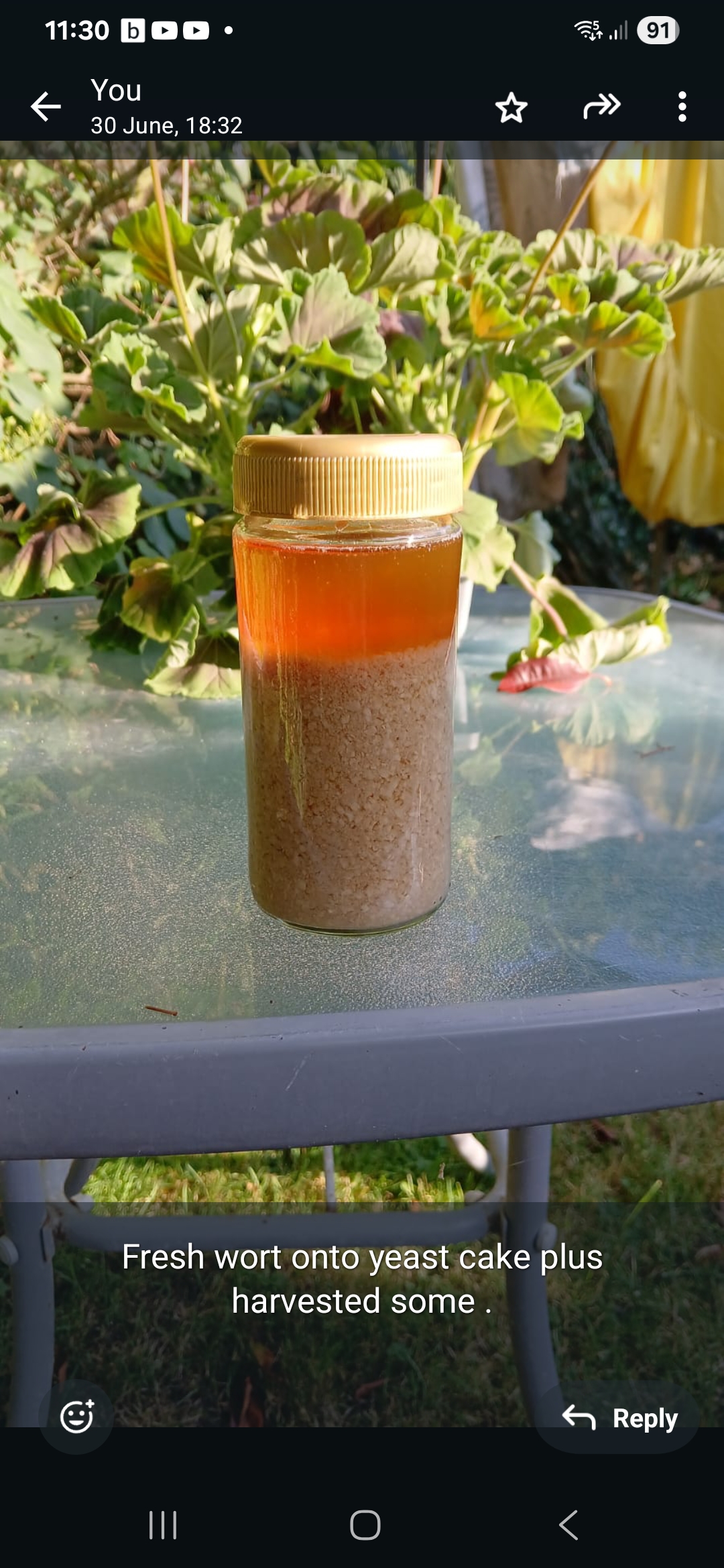I might even take this an inch further and tilt the kettle slightly, so that the trub can collect on one side only. I might have to do this twice, as emptying the kettle in one go is... Heavy.
And putting it down rouses the trub a bit. Continuous decanting flow is key for the undisturbed layer according to my findings.
I won't make any hardware changes, but I've had good success with yos, 200 ppm smb pre-mash and cling film as a simple mash cap. Avoiding stirring when not necessary and that's basically it. The flocculation during the boil was crazy, the foam colour was different, the foam was bigger and the mash and boil smelled A LOT less. The beer tastes cleaner and less "green" although it's one week old. Downside, I smell sulfur. I probably overdosed SMB, but I was deliberately risking that.
I am going to experiment with this approach as well. Tilt the kettle by putting a piece of wood underneath the front at the end of chilling so everything settles towards the back. Then start the transfer with it tilted. I plan on making a "Trub Dam" type thing that would rest on the bottom of the kettle around the outlet. I would put the trub dam in place before the transfer begins. Once the wort level goes down I will lower the kettle down to level and hope the trub dam keeps most of the stuff away. It may or may not work.
Regarding sulfites, it is system dependent as well as your beer flavor desires.
1) Yes, the goal is to not be able to smell your mash while it is going on. If you can smell wonderful malty aromas, they are escaping from your beer!
2) How "tight" your system is designed for low oxygen brewing will have a large impact on how much is the minimum amount of sulfites you need to use to have a true low ox brew. Some folks can purge their sealed mash tun with nitrogen. This lowers their need, but they still use 25ppm of sulfites. The sulfites really do play an important part.
200ppm is very high, but I am glad you did it because there is a learning curve and now you have seen some impact. Over the next 5-10 brews you can lower that number and dial in from
end beer flavor. This is where it is up to you the brewer and is purely subjective, not scientific. As a reference, I have worked on my system enough to be in the 35ppm range and might go back up to 40ppm. But still, quite far away from 200ppm.
Remember that sulfites turn into sulfates once you expose them to oxygen. So your end beer will reflect higher sulfate levels.
Also, the group has learned over the years that to some extent, oxygen = flavor. If you use a very high sulfite level, the beers while technically impressive, can become one dimensional. It is just that the crossover point of where you might want to be still involves quite a bit of oxygen mitigation compared to HIDO brewing, just not too much.

































![Craft A Brew - Safale S-04 Dry Yeast - Fermentis - English Ale Dry Yeast - For English and American Ales and Hard Apple Ciders - Ingredients for Home Brewing - Beer Making Supplies - [1 Pack]](https://m.media-amazon.com/images/I/41fVGNh6JfL._SL500_.jpg)





























